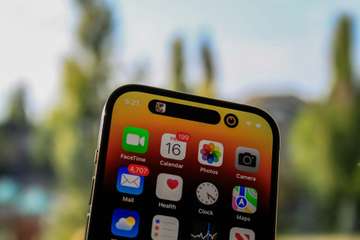SMS vs Email Marketing in 2025: Why Smart Brands Use Both

Introduction: Beyond “SMS vs Email”.
Marketers have debated for years: Which is better — SMS or email? In 2025, the truth is clear: it’s not about choosing one over the other. The most effective marketers use both strategically to create seamless, customer-first journeys.
At the heart of this strategy is SMS marketing — fast, personal, and nearly impossible to ignore. With 98% open rates and response times under three minutes, SMS gives brands direct, real-time access to their audience’s lock screen.
Email, on the other hand, is built for depth, storytelling, and nurturing long-term loyalty. Together, SMS and email make a powerful pair. But if you want to capture attention instantly, SMS is the channel you can’t afford to overlook.
SMS vs Email: Quick Performance Breakdown
Metric | SMS Marketing | Email Marketing |
Open Rate | ~98% | 15–20% |
Click-Through Rate | 8–12% | 2–5% |
Response Rate | 40–50% | 4–6% |
Deliverability | Rarely blocked | Can hit spam filters |
Speed | Immediate | Minutes to hours |
Content | 160 characters | Long-form, multimedia |
Best For | Time-sensitive alerts, reminders, offers | Storytelling, newsletters, education |
Takeaway: SMS dominates in immediacy and engagement, while email excels at depth and detail.
Why SMS Marketing Matters More in 2025
Today’s consumers are constantly connected to their phones. In fact, most people check text messages within three minutes of receiving them. That level of visibility is unmatched.
Here’s why businesses are investing heavily in SMS:
Unparalleled reach: Every mobile phone supports SMS — no apps or internet required.
Instant attention: Perfect for appointment reminders, flash sales, shipping updates, and urgent alerts.
High trust factor: Unlike email, SMS rarely gets filtered as spam.
Better ROI: With higher open and response rates, SMS consistently delivers strong returns.
When your message must be seen, SMS is the channel of choice.
When to Use SMS vs Email and When to Combine Both
Use SMS When You Need:
Appointment reminders or confirmations
Flash sales and limited-time offers
Shipping notifications and order updates
Security codes and account verifications
Urgent alerts or personal messages
Use Email When You Need:
Newsletters and brand storytelling
Educational content (tutorials, guides, product tips)
Onboarding workflows for new customers
Long-form content with images, videos, and links
Nurture sequences that build loyalty over time
Use Both Together For Maximum Impact:
Abandoned cart campaigns: Email explains benefits, SMS drives urgency with a discount.
Event marketing: Email shares full details, SMS sends reminders on the day.
Customer feedback requests: Email for surveys, SMS for a quick “Yes/No” response.
Pro tip: Don’t think channel-first. Think customer-first. Match the channel to the customer’s context.
The Customer Perspective: Choice Matters
Consumers don’t want more messages. They want better, more relevant communication.
Data shows:
48% of consumers feel overwhelmed by too many emails.
30% are frustrated by repetitive messages.
53% say even legitimate emails sometimes feel suspicious.
The solution? Offer choice. Let customers decide whether they prefer SMS, email, or both. Then deliver content tailored to their preferences.
When you respect communication preferences, you build trust — and trust drives engagement.
Best Practices for SMS & Email Marketing in 2025
1. Always Get Consent
SMS is highly regulated (TCPA, GDPR, CAN-SPAM). Always use opt-in campaigns and be transparent about what subscribers will receive.
2. Segment Your Audience
Relevance is everything. Segment by:
Customer preferences (SMS vs email)
Behavior (purchases, engagement level)
Timing (best send times per user)
3. Use Channels to Complement Each Other
Email: Rich, informative, visual.
SMS: Short, urgent, action-driven.
Together, they create a seamless omnichannel experience.
4. Automate Smartly
Use automation to:
Trigger SMS confirmations instantly after an order
Send reminder texts 24 hours before appointments
Deliver nurture emails based on SMS engagement
5. Measure & Optimize
Track metrics like open rate, CTR, opt-outs, and conversions across both channels. Refine campaigns based on what your audience responds to.
Real-World Scenarios: Which Channel Wins?
Scenario | Best Channel |
Appointment reminders | SMS |
Urgent notifications | SMS |
Flash sales / limited offers | Both |
Shipping & order updates | Both |
New customer onboarding | |
Newsletters & product updates | |
Customer feedback | Both |
Security verifications | SMS |
The most successful brands don’t choose. They combine.
Why High-Performing Teams Choose SMS First
Email still plays a critical role, but SMS is the secret weapon for modern marketers. When time, visibility, and trust matter most, SMS delivers unmatched results.
That’s why leading businesses across retail, healthcare, finance, and travel are prioritizing SMS in their communication stack — and using email as the long-form companion channel.
Final Thoughts: SMS + Email = Smarter Marketing
The debate isn’t SMS vs email. It’s SMS + email.
Email builds relationships over time. SMS drives instant action. Used together, they create a customer-first strategy that’s relevant, timely, and personal.
If your brand wants higher engagement, faster responses, and stronger customer satisfaction in 2025 — SMS messaging is the essential foundation. Ready to add SMS to your marketing mix? At Dialogios, we help brands like yours unlock the power of SMS with scalable, reliable messaging solutions.
Send real-time alerts, reminders, and promotions
Automate SMS campaigns at scale
Improve customer experience instantly
Talk to our SMS experts today.